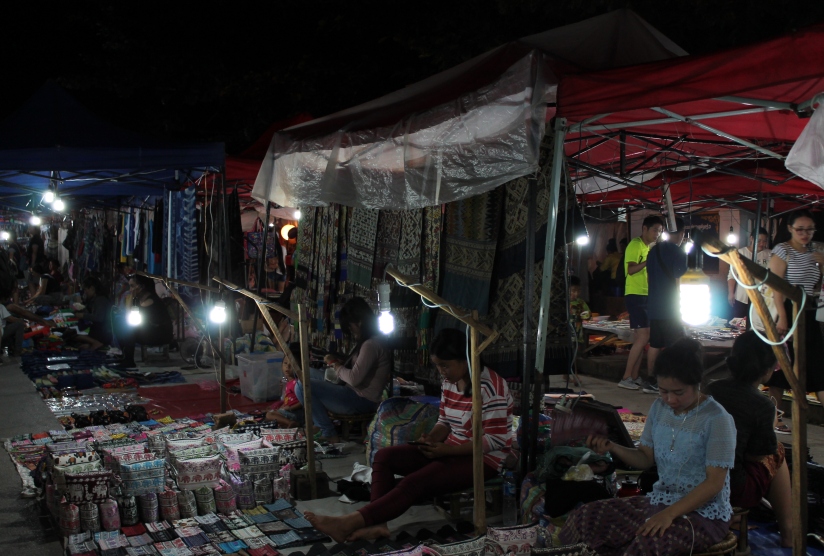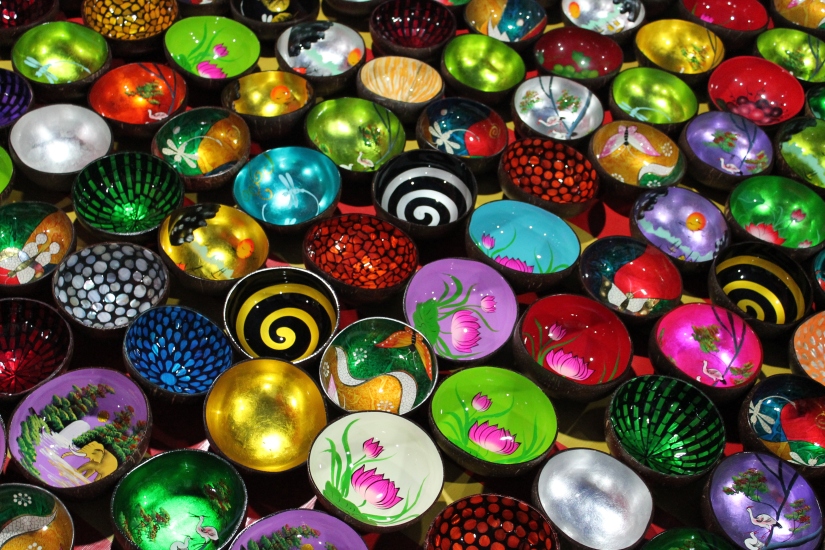The same stream of life that runs through my veins night and day
runs through the world and dances in rhythmic measures.– Excerpt from the English translation of the poem Praan from the Gitanjali by Rabindranath Tagore
I first heard of Luang Prabang from Matt Harding. For an era that didn’t really need any USP for a travel site, he had a bright and shining one. So when I was invited to hop on a trip to this UNESCO World Heritage Site, Dancing Matt came alive in my head again and Palbasha Siddiqui’s haunting voice singing the lines above was the soundtrack of my decision making moments. Although it was a first along a few different vectors, this time I was unafraid to say yes.
And what a magnificent trip it turned out to be!
Nestled cozily between five countries, Laos is the least publicized destination in S.E.Asia. This little country was minding its own business with kings and vassals, and even the colonial intruders that was common in these parts, till it was inadvertently stuck in the middle during the Vietnam War. That war ravaged the country and stripped it of everything it ever had. Even today, there is a belt of land in eastern Laos that’s riddled with unexploded bombs and it is estimated that it will take a hundred years to clear them completely.
So what were we doing there, you ask? Tourism is a double-edged sword, but one of its perks is that it tries to preserve a location’s heritage, if only for a transit population. Luang Prabang is a UNESCO World Heritage Site for its magnificent row of Buddhist temples from five hundred years ago. Now throw in stunning natural sights in the vicinity and European style cafes that cater to the backpacker circuit that passes through here, and you have yourself a town worth its salt as much as the other gems in the region.
Haunting History and Heritage
The most arresting temple here houses the Pha Bang Buddha, Laos’s talisman for over half a millennium, and after which it is named (Luang Prabang means The Great Pha Bang). The temple is just a decade old! The old and the new come together seamlessly here, as this multi-tiered ornate new building that stands true to its architectural roots envelopes the most sacred item in all of Laos’s history. No pictures allowed now, but this blogger seems to have caught it before it housed the idol and has shots of the inside. We also wandered around to many other Wats, each with their own unique stupas, murals and architectural styles. What humans have made of the Buddha’s request not to idolize him continues to amaze me, and on each visit to a temple I am more and more convinced of the human need to have a material object for gratitude and transfer of responsibility.
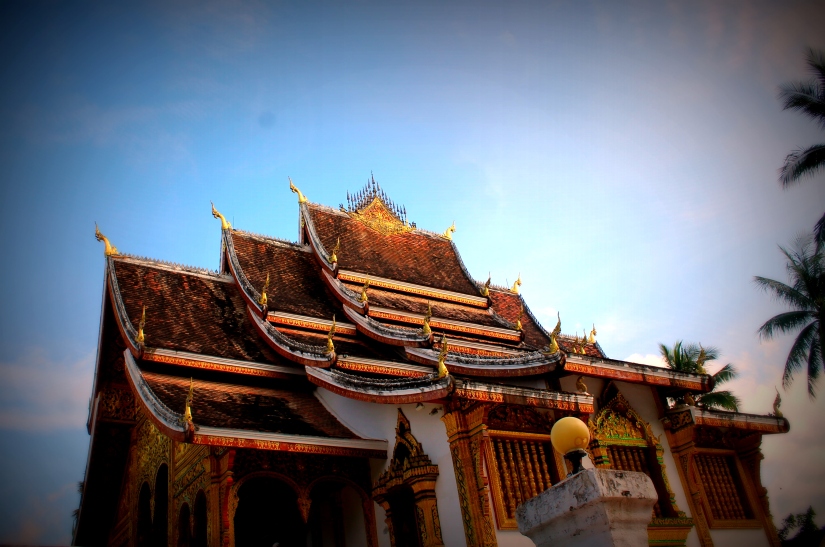
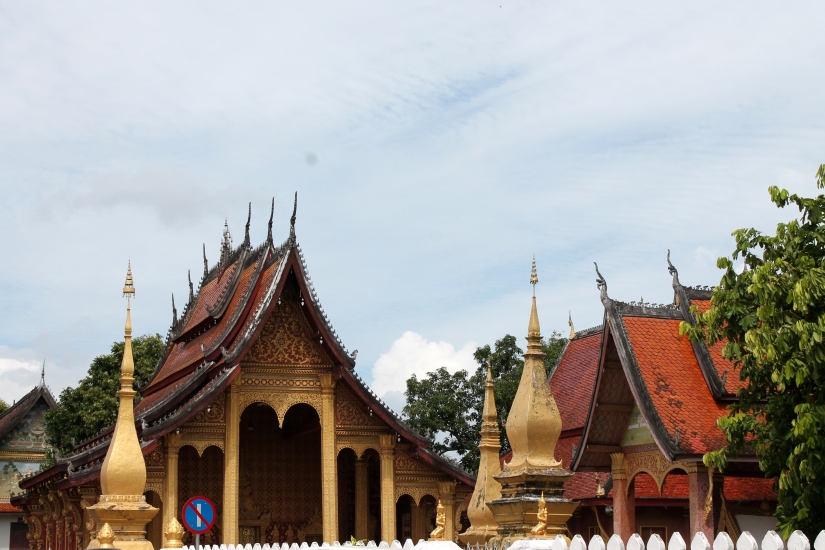
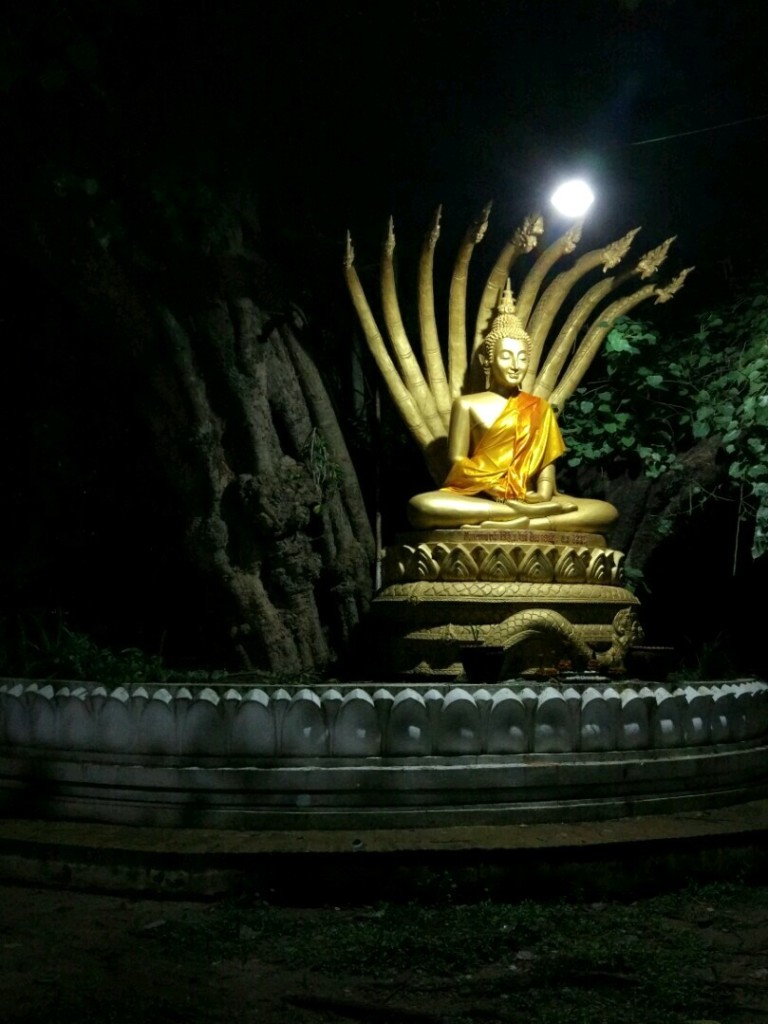
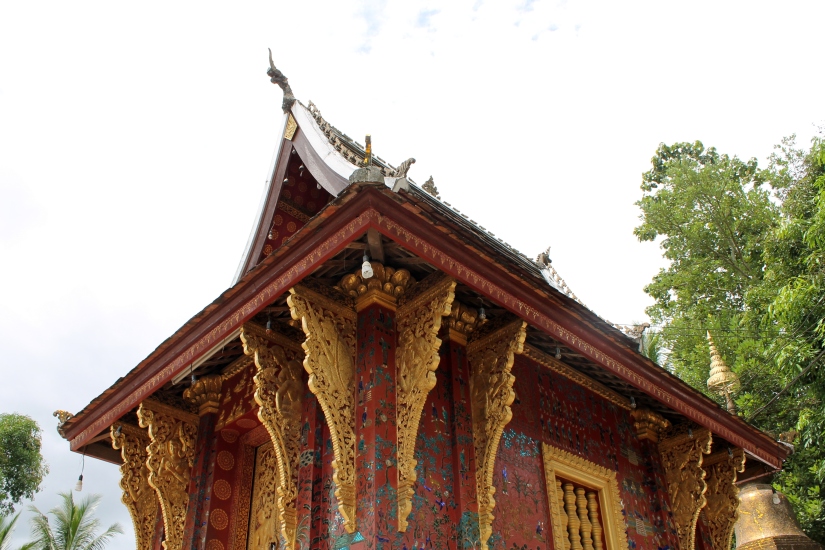
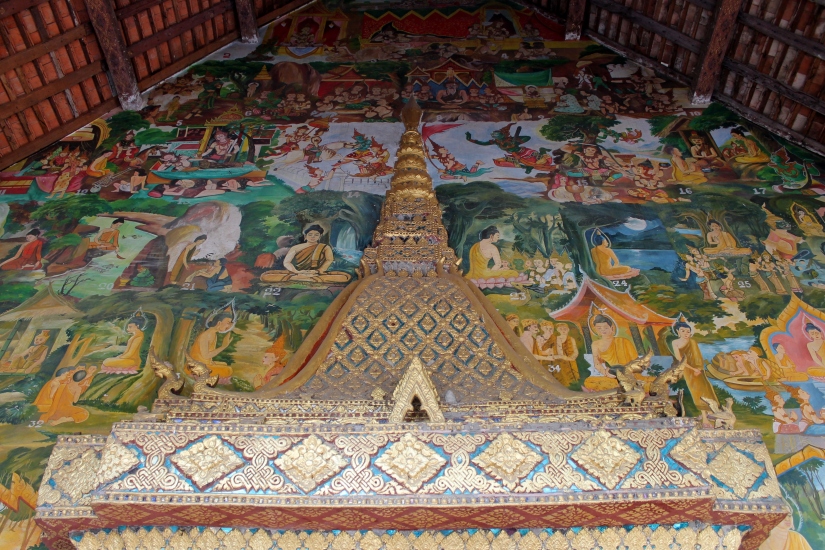
Breathing In The Great Outdoors
Laos is blessed with great natural beauty out in the boondocks. The intrepid travelers head out to guided multi-day treks to soak in anything from high passes to real Lao food to tribal villages. It’s gotta to be guided, you don’t want to step on an unexploded bomb. A microcosm of that long journey opened itself to us as we cruised up and down the mighty Mekong, the lifeline of S.E.Asia. The best deal, though, was the Kuong Si waterfalls – a stunning multi-tiered (hey, like a temple roof, yeah?!) beauty that cascades over limestone rocks to colour its pools a surreal turquoise. I stood at the viewing bridge at its foot and soaked in the spray, not wanting to move an inch. But there was a trek to the top, and my feet (clad in beach slippers that day) automatically made their merry way up a steep slope of sticky mud. A short while later, the views at the top made this trek totally worth it! A tranquil shallow pool covered in a canopy of trees belied the fact that a gushing waterfall started from it just a few feet away, there was even a raft ride poking further into the back reaches of this pool!
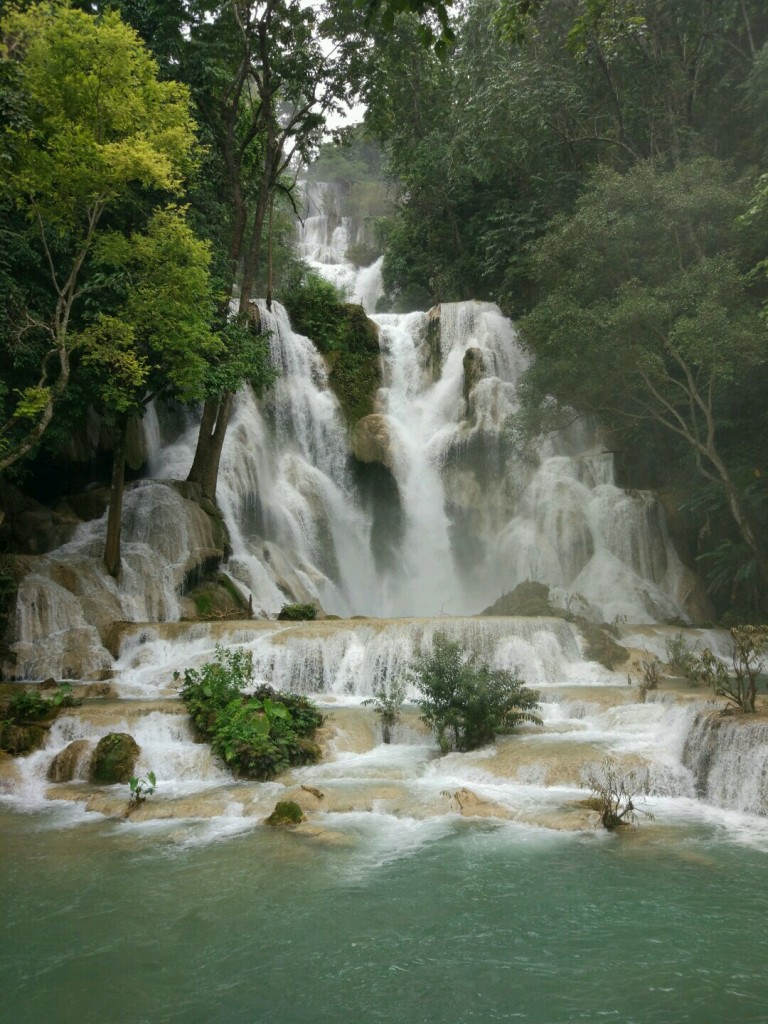
A viewing platform sat pretty at the head of the falls, confusing me if I should peek over the powerful plummet of this falls or gaze at the green mountains all around. The mountains won.
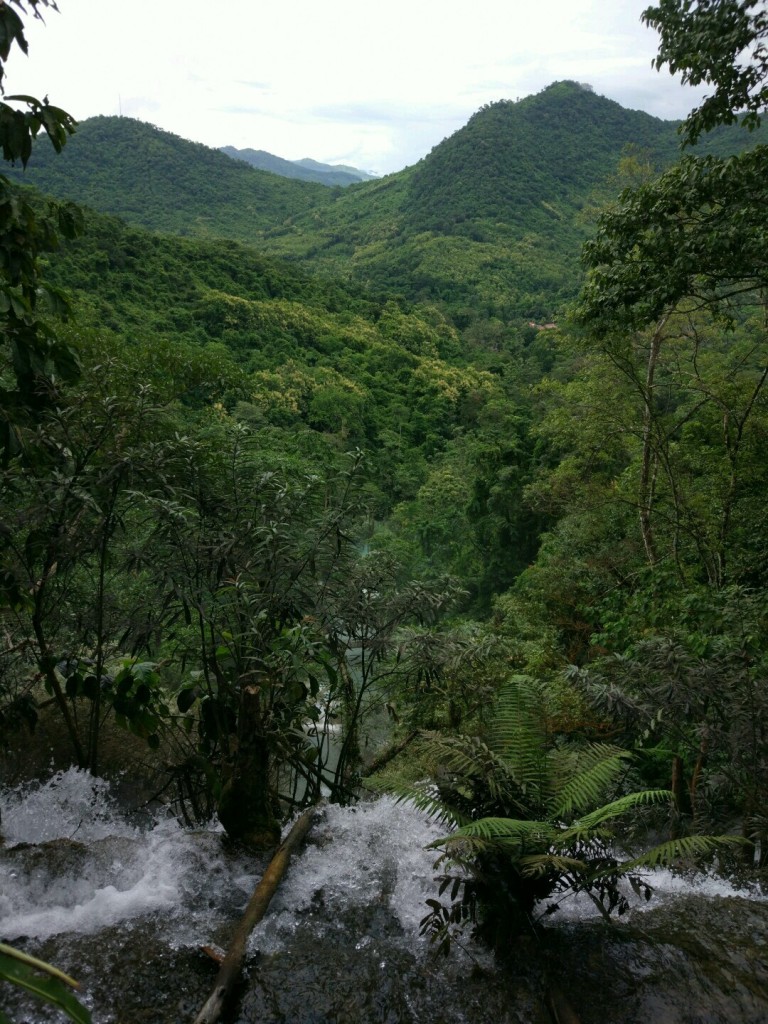
Foraging For Good Grub
Flanked by Thailand and Vietnam and their famous flavours, the food in Laos is easily overlooked. But there are enough nice restaurants in town that have a local menu to provide a taste of the town to those willing to try it. And try it I did. The one ingredient that differentiates it from Thai and Viet food is padek (fermented fish), and that’s the one thing vegetarians can’t try. But I did go nuts with ginger, galangal, cilantro and chillis that come together in salads and dips called jaew. And oh, the sticky rice. I’m probably the only one who was getting marginally addicted to this thing!
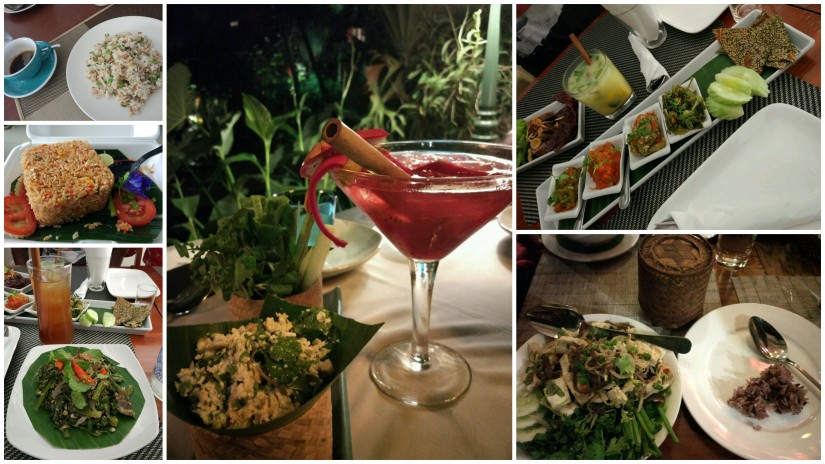
The People Factor
I wonder about the Laotians. This trip had me pondering a multitude of thoughts about connecting travel to economies. My travel style is fiercely DIY and this comes with its share of bargain hunting and sleepless nights, but I’ve always reveled in being able to do it all on my own. But what if I’ve been holding back from the only income that people in such tourist places receive? What if there’s a much better way to be both a DIY traveler and someone who is conscious of the economy that they travel in? It is so easy to be DIY in the west, but Asia has me asking myself a few tough questions. I ponder.
